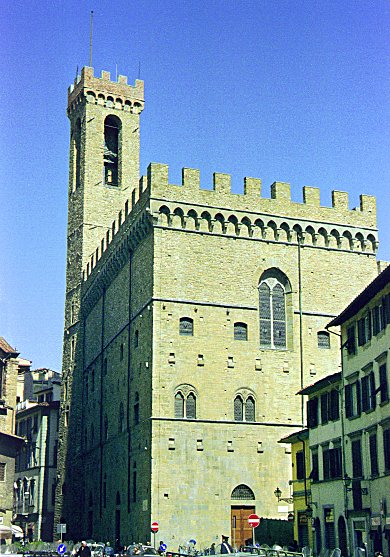02: Florence’s Rise to Power
Florence as new power center: how does this happen?
1. economic development
2. international politics, especially the papacy

Signs of expansion: new walls, 1173-5
Includes Oltrarno—expanded in 13th c
Next big circle of walls: 1284-1333
Cathedral Santa Maria del Fiore (1296-1436); Palazzo Vecchio (begun 1299)
General issue in Italy: the rise of new urban governments: 1000-1200
Larger setting: the Holy Roman Empire
- 2 main parts: Kingdoms of Germans, Kingdom of Italy
- 1053: Normans capture Sicily, S. Italy from Muslims Papacy recognizes them as rulers
- Reminder: Investiture Controversy (ca 1075-1122)
Italian cities: rise of the “comune” ca 1100 (Eng: commune)
- association of merchants
- Oath: private, contract
- corporate body
- elected consuls
- 1183 Lombard League defeats HRE, wins legal recognition (1183)
podestà
- Introduced by emperor; ultimate authority in city. Legal training; administrative staff
- one-year terms, travel from city to city
- professionalization of legal study
Guilds
- corporate bodies
- protect business dealings
- regulate quality, training, support for members, etc
- Because of economic clout, will want say in running of govt
- Big guilds: banking (in Italy), woolen cloth.
Big picture: Politics in the Thirteenth Century: the big players
Staufen or Hohenstaufen Dynasty: combines HRE, Sicily
Frederick Barbarossa’s son Henry VI marries a Norman princess in Sicily: Constance
1197 Henry dies. heir: baby Frederick
 Frederick II Becomes king of Sicily, HRE
Frederick II Becomes king of Sicily, HRE
threat to Italy, including papal states
1250 Frederick dies
Guelf-Ghibelline conflicts
- Welf: family in opposition to Staufen
- Waiblingen: a Stauren territory
War after death of Frederick II
- Papacy claims S. Tuscany
- HRE claims rest: Kingdom of Italy
- Manfred claims Naples and Sicily
Capital needed: Florentine bankers
Manfred defeated at Battle of Benevento, 1266 by Guelfs, Charles of Anjou
1268 Conradin, last Staufen heir, defeated
long-term alliance Rome-Florence-France-Regno (“Kingdom”)
1282 “Sicilian Vespers”: revolt against Charles of Anjou
1296: King Peter of Aragon rules Sicily
thrones of Sicily and Aragon diverge until 1409
 Florin: first minted 1252
Florin: first minted 1252
Florentine effects:
1237 Battle of Cortenuova: Frederick claims right to name Florence’s podestà
Ghibellines exile Guelfs
1250: Frederick dies, Guelf exiles defeat Ghibellines
New Government: merchants: “Primo Popolo”
militia (gonfaloni)
Captain of the people
2 advisory councils: guilds, gonfaloni
 Bargello: built for primo popolo
Bargello: built for primo popolo
1260: Manfred (illegitimate son of Frederick),
Sienese, Ghibellines defeat Florentine Guelfs at Montaperti. Guelfs exiled
1265: Florence supports Guelfs
Palazzo, Piazza della Signoria
1282 Sicilian Vespers: Guelfs weakened: factions fight in Florence

Daniel Waley, The Italian City-Republics, p.213
Families:
Old nobles; magnates (magnati); grandi
Ghibellines
House towers
New money: trade
contado
1292: “Secondo popolo”: guild based government. Dino Compagni
1293, 1295: Ordinances of Justice
government by guild members
Nobles post security deposits
Guelfs split into Blacks and Whites
1302 expulsion of White Guelphs



